Published 22 Aug 2025
7 Hidden AI Crypto Trading Mistakes That Cost Beginners $1000s in 2025

The cryptocurrency market has exploded, with crypto traders growing from 100 million to nearly 900 million people in just five years. AI crypto trading has become incredibly popular. These systems want to improve trading through automated transactions, market trend predictions, and sentiment analysis. Yet many newcomers lose thousands of dollars because of mistakes they could easily avoid.
The promise sounds great — AI trading bots that study market data, spot patterns, and adjust immediately. But new traders often face disappointment when they start AI cryptocurrency trading. Most AI crypto trading bots get pricey and fail to deliver. New crypto traders don't realize that standard technical analysis misses crucial human factors like fear, greed, and hype that shape crypto prices. Security problems, code bugs, and failed strategies make it crucial to understand proper AI crypto trading methods to avoid expensive mistakes.
This piece reveals seven hidden mistakes that drain beginners' accounts in 2025 and shows you practical ways to keep your investments safe.

Overtrusting AI Bots Without Understanding Their Logic
The biggest problem in AI crypto trading starts before you make your first trade — blind faith in trading bots without knowing how they work. New traders dive into algorithmic trading with excitement. They soon find out they've given their money to a system they don't really understand.
What the mistake is
Putting too much trust in AI crypto trading bots means depending on "black box" systems. Users can't see how these systems make their decisions. These AI trading platforms often give you pre-built bots that promise big profits but hide their inner workings. Traders give up control of their funds to an unknown system. They have no way to check if it works well or manages risks properly.
This issue runs deeper than just secrecy. AI trading bots often base decisions on connections that make no logical sense. A bot might see patterns between Bitcoin prices and totally unrelated things, which creates irrational trades. Users can't check the AI's thinking process, so they stay exposed to its bad choices.
A 2023 survey shows that one-third of investors would let AI trading bots handle all their investment decisions. People often trust technology too much and don't realize how complex markets really are.
Warning signs you're overtrusting AI bots:
- You don't understand how trades are decided
- You can't explain the reasons behind specific trades
- You believe unrealistic profit claims without proof
- You let the algorithm make all decisions
Why it happens
Automation's appeal makes this trap easy to fall into. AI trading says it removes emotions from investing. But this often means losing valuable human judgment that's vital during market crises.
The more freedom an AI has, the harder it gets to predict what it'll do. Unlike regular software with fixed rules, AI learns from data and changes its behavior. It makes choices based on probabilities instead of strict instructions. This flexibility makes AI useful but its thinking isn't always clear.
Things get worse when AI has real-life financial power. An unexpected AI move isn't just a small error — it can cost you serious money. Traders end up in a strange spot: they use tools made to handle complex decisions that they can't really understand.
There's another reason — AI doesn't actually "know" things like humans do. It creates responses from statistical patterns without true understanding. This sometimes causes "hallucinations" where the system confidently gives wrong information. The problem isn't just that AI makes mistakes — it presents false info with complete certainty, making errors hard to spot.
How to avoid it
Think of AI crypto trading bots as helpers, not independent decision-makers. Let them run tests, try strategies, and place small trades, but you should know what's happening. Finance isn't just numbers — it includes goals, values, and sometimes instinct.
Look carefully into trading platforms that claim their AI algorithms can make huge returns. The CFTC has found several cases where people lost money to fraud schemes promising regular, above-average profits through AI. One case saw customers lose nearly 30,000 bitcoins — worth about $1.70 billion at the time.
To stay safe and build trust, follow these steps:
- Look up any company or trader offering AI solutions
- Check key personnel photos with reverse image searches
- Look at when the trading website was registered
- Ask a financial advisor or trusted friend's opinion
- Know the risks of your assets
- Think about how fees, spreads, and subscriptions affe
Note that human expertise is vital in AI trading. People should create the overall strategy, set risk limits, and watch AI algorithms to keep them on track. The best results come from mixing technology with human oversight.
To summarize, good AI crypto trading isn't about giving up control. It's about knowing your tools and using them smartly with knowledge and risk management.
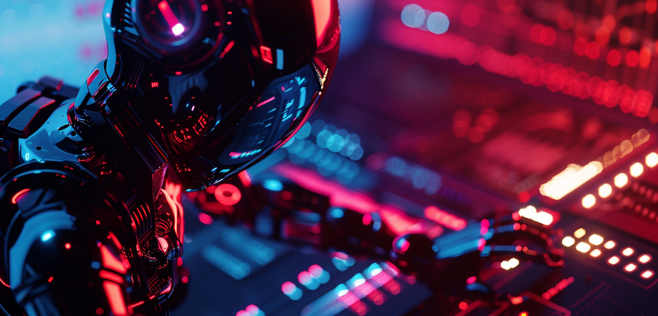
Ignoring Backtesting and Relying on Hype
Many new traders chase AI trading solutions that promise huge returns without checking if they work. They skip a step that sets apart winners from those who lose thousands: proper backtesting of trading strategies.
What the mistake is
Backtesting tests a trading strategy against past market data to see how well it might work. New traders often skip this step and follow market hype instead — a big mistake in AI crypto trading. They end up investing based on social media buzz, what influencers say, or hot topics without proving the strategy's worth.
The numbers tell a clear story: people invested about $30-40 billion in generative AI projects, but 95% of these showed no real business results. Just 5% of AI pilots brought real value, while most got stuck in testing or didn't show up on financial reports.
Signs you're following hype instead of data:
- Buying AI cryptocurrency trading bots just because they're hot on social media
- Making choices based mostly on influencers' or Telegram groups' advice
- Rushing to invest because you're scared of missing out
- Looking only at token charts while ignoring broader market signs
Unlike careful backtesting, hype-driven investing runs on emotions rather than solid financial logic. This often puts traders in a bad spot — they buy late and sell low, creating losses they could dodge with proper strategy testing.
Why it happens
FOMO (fear of missing out) drives most hype-based choices. Traders see others seemingly making money from trending cryptocurrency or AI crypto trading bots. This makes them jump in without understanding how things work or what risks they face.
Media coverage, social influencers, and friends' talk can make everything feel urgent. New crypto traders often let this outside pressure override their better judgment. Today's AI excitement looks like past tech bubbles. Even OpenAI's CEO Sam Altman says investors might be "over excited" about AI, with values running ahead of real results. This mirrors the late 1990s dot-com bubble when companies got big investments despite unclear profit paths.
Scammers use this excitement to their advantage. They know claims about AI's power to generate amazing returns attract people who want quick profits without learning proper trading methods.
How to avoid it
Start with a solid plan for using AI in crypto trading. Test your strategies thoroughly before risking real money. Good results from past data testing often point to future success. Watch out for these backtesting limits:
- Past results don't guarantee future performance
- Unusual market events can skew historical data
- Small datasets might miss important market conditions
- Strategies that worked in bull markets might fail in bear markets
Here's how to do effective backtesting for AI crypto trading:
- Set clear investment goals before looking at any AI trading solution
- Give yourself 24 hours before acting on hyped opportunities
- Check that AI-generated data isn't wrong or incomplete
- Look at several independent sources before deciding
- Be very careful with platforms promising unrealistic profits
Think of "AI" as a multiplier — it makes your inputs bigger. Your edge comes from clean data, good execution, and strict risk control, not just adding AI to a strategy. Look for proof like walk-forward performance, live trading results, and speed stats. Backtests alone don't prove something works.
You can use AI for screening and alerts while only letting it trade after proper testing. This helps separate helpful tools from risky automation.

Skipping Risk Management Features Like Stop-Loss
Many traders overlook one of the most dangerous mistakes in AI crypto trading: skipping significant risk management features, especially stop-loss orders. New traders are happy to set profit targets and entry points, but they often miss these vital safeguards that shield their capital from adverse market movements.
What the mistake is
Trading without risk management in AI crypto means you don't have preset exit strategies for losing trades. This shows up most often as trading without stop-loss orders — automated commands that close positions at specific price points to limit losses. The volatile nature of cryptocurrency markets makes trading without these safeguards extremely risky.
Stop-loss orders work like financial circuit breakers. They automatically sell assets at preset price levels. These orders help you identify, assess, and reduce potential financial losses in cryptocurrency trading. Research shows that basic stop-loss rules can substantially boost monthly returns while cutting volatility. One study revealed returns jumped to 9.13% with lower volatility of 21.36%.
AI cryptocurrency trading platforms users often make these three stop-loss mistakes:
- They skip stop-loss settings in bot setups
- Their stop-losses are too wide or too tight
- They override stop-losses manually when triggered
The lack of circuit breakers and trading halts in crypto markets makes stop-loss mechanisms more critical than traditional markets.
Why it happens
New traders often skip proper risk management because they trust AI crypto trading bots too much. They think the bot's complex algorithms will protect their investments naturally. Most bots simply follow strategies as set up — including trading without safety measures if not properly configured.
Psychology plays a big part too. The disposition effect makes traders hold losing positions longer than they should, which stops them from setting up stop-losses that would force them to accept losses. This choice can get pricey. Studies suggest taking losses sooner (at 10%, 20%, or 30%) works better than waiting for larger drops of 40% or 50%.
There's another reason: misunderstanding stop-losses. New crypto traders often notice stop-losses negatively — seeing them as failures rather than protection. They hope for recovery instead of accepting actual losses.
Setting up AI crypto trading risk management can seem complex. With different stop-loss types available — standard, trailing, and stop-limit orders — new traders feel overwhelmed and choose simpler setups without these key protections.
How to avoid it
Learning about different stop-loss orders helps you manage risk in AI crypto trading better. Standard stop-losses become market orders when triggered, ensuring execution but not exact selling prices. Trailing stop-losses move up with favorable price changes to lock in profits. Stop-limit orders control price but might not execute in fast markets.
Your asset's volatility and risk tolerance should determine your stop-loss levels. For cryptocurrencies, setting stop prices 5-15% below purchase rates works well for most traders. Use position sizing with stop-losses to decide how much money you'll risk per trade.
Add these safety features to your AI crypto trading bot:
- Make stop-loss and take-profit orders part of your standard setup
- Use trailing stops to secure profits during price increases
- Test your stop-loss strategy through backtesting before using real money
- Set rules against manually changing stop-losses during market swings
- Check and update stop-loss settings as markets change
Stop-losses take emotions out of trading decisions. They add structure to your investment approach and free you from watching markets constantly. Making risk management a core part of your strategy, not just an option, will boost your chances of success in AI crypto trading.
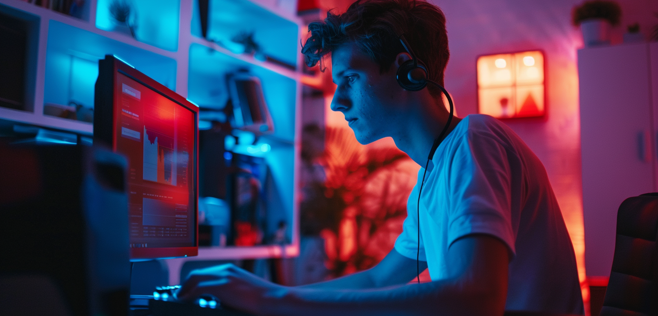
Using One Bot for All Market Conditions
Many crypto newcomers make a basic mistake. They rely on just one AI crypto trading bot to handle all market conditions. This often results in major money losses as markets move between bullish, bearish, and sideways patterns.
What the mistake is
Using one bot for all market conditions means betting on a single algorithm to work well in any situation. This approach ignores how AI cryptocurrency trading tools actually work. Simple rule-based bots stick to fixed instructions (if X happens, do Y). They can't adapt to changing markets without human input. Markets evolve, and these bots quickly become outdated.
New traders often pick a bot that worked great in a bull market. They soon find it fails miserably in bear or sideways markets. Strategies that shine in one market environment often crash in others. To name just one example, momentum strategies might work great in strong uptrends but lose money fast in range-bound markets.
This problem gets worse when markets change suddenly. Crypto prices can jump 10-20% in minutes because of a tweet, new regulations, or large trades. Static algorithms just can't keep up with these quick shifts in market psychology.
Why it happens
New traders don't fully grasp what AI crypto trading bots can and can't do. Many think that because a bot uses "AI," it will work in any situation. The truth is, most AI systems learn from specific market conditions and struggle with new scenarios.
Beginners don't realize how complex crypto markets really are. Different market phases need completely different approaches. A bot that learned during calm markets might fail when things get volatile.
New traders love simple solutions. Running multiple bots takes more time and knowledge — resources most beginners don't have. The easy path of using one bot seems more attractive.
There's another reason — the comfort of finding what seems like a perfect strategy. When a trader's bot works well at first, they think it's because the bot is special, not because market conditions are favorable.
How to avoid it
The best solution is to broaden your AI crypto trading strategy. Using multiple trading approaches reduces risk and boosts portfolio stability.
Here are the steps you need:
- Implement market-specific bots — Use different bots for bull, bear, and sideways markets. Switch them based on current conditions
- Diversify across asset classes — Split your money between different cryptocurrencies, stablecoins, and trading pairs to reduce risk in any single market
- Use correlation analysis — Pick strategies that don't move together. Related approaches can make diversification useless
- Regularly review performance — Quick action on failing bots helps you adapt faster during big market changes
- Consider technological diversity — Different bot providers reduce risk. Many financial firms use similar AI models, creating a "technological monoculture"
AI-powered trading bots work differently from basic ones. Simple bots follow fixed rules. Advanced AI bots study market data, spot complex patterns, and learn from past trades.
Market conditions change completely over time. Bull market strategies usually fail in bear markets or sideways trading. The best AI crypto trading bots spot current market conditions and adapt. They play it safe during volatile times and get aggressive when risk-reward looks good.
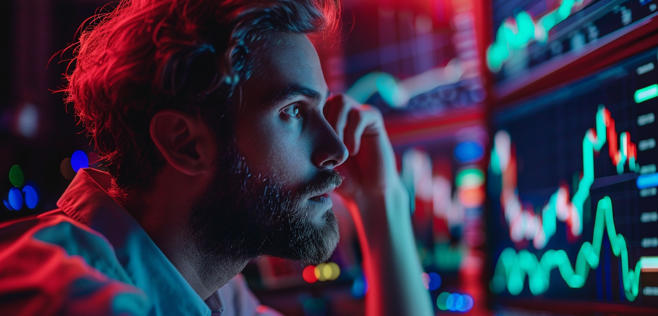
Falling for Scam Bots or Unrealistic Promises
One of the most expensive mistakes in AI crypto trading happens when beginners fall for scams that steal their money. The crypto world has become a playground for scammers who take advantage of people's interest in AI technologies.
What the mistake is
People lose money when they invest in fake AI-powered trading platforms that promise amazing returns without risks. These scammers promote automated trading algorithms and crypto schemes with unrealistic profit guarantees — sometimes claiming returns of thousands of percent or 100% success rates. These promises are lies created just to steal money from traders who don't know better.
The mistake takes several forms:
- Believing platforms that claim their "AI" can make guaranteed daily profits (like $1,000 per day)
- Falling for deepfake videos where celebrities seem to endorse trading platforms
- Putting money into platforms where you can't withdraw your funds later
- Trusting claims of "95%+ win rates" from trading bots
Many people have lost huge amounts through these schemes. The CFTC documented a devastating case where customers lost nearly 30,000 bitcoins — worth about $1.7 billion.
Why it happens
We noticed that these scams work by targeting two basic human weaknesses: greed and naivety. Beginners who want quick profits without work are easy targets for promises of "easy wealth".
Several things make it easy for scammers:
- AI's technical complexity makes it hard for regular users to verify claims
- Crypto markets lack the regulation found in traditional finance
- Crypto transactions' anonymity helps scammers vanish
- Social media ads and fake reviews create false trust
Scammers use high-pressure tactics to rush people into decisions without research. They often say an offer won't last long or that you need to act now.
These days, scammers use deepfake technology to make videos where celebrities seem to endorse their platforms. A recent scam used fake Elon Musk videos to promote a crypto trading platform and stole more than $2 million.
How to avoid it
The most important thing to know is that no trading system — AI-powered or not — can guarantee constant, high returns without big risks. The CFTC states clearly that "AI technology can't predict the future or sudden market changes".
Here's how to protect yourself from ai crypto trading bot scams:
- Do your homework before trusting any platform — look up the company history, domain age, and regulatory status
- Check the identities of the core team through reverse image searches
- Watch out for buzzwords like "alpha-generating" or "quantum" when describing AI features
- Stay away from platforms that need big upfront deposits or promise guaranteed returns
- Ask for advice from financial advisors or trusted friends before investing
Red flags should go up when platforms promise guaranteed profits — this never happens in real trading. You should also be very careful with platforms that say their AI can make you rich automatically.
During your crypto trip, always check celebrity endorsements through official channels and use two-factor authentication on real crypto accounts. Remember that good ai cryptocurrency trading needs knowledge, research, and realistic expectations instead of blind trust in miracle technology.
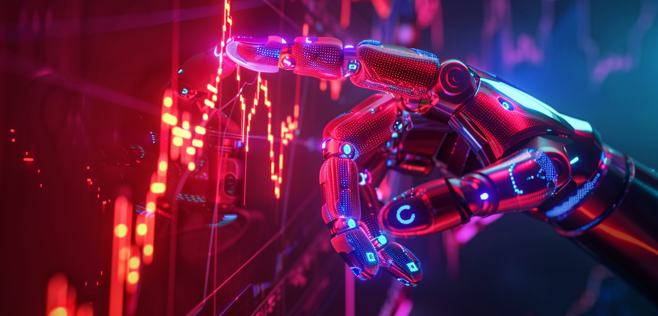
Neglecting to Monitor and Adjust Bot Settings
The "set it and forget it" approach creates a dangerous trap for traders who use automated trading tools. Many traders get lured by automation's convenience. They set up their systems once and leave them to market forces — sometimes with devastating financial results.
What the mistake is
Traders who don't monitor and adjust their ai crypto trading bot settings let automated systems run wild. Market conditions keep changing, but the systems keep using their original settings. This passive approach assumes the first programming will work forever, but cryptocurrency markets never stop evolving.
Bad results can follow quickly. Wrong settings lead to poor performance or huge losses, especially in volatile markets. Static risk settings don't adapt to market changes, so bots keep trading when they shouldn't. Bot performance gets worse over time when strategies stay frozen in place.
A trader learned this lesson the hard way. Their rejected stop-loss order went unnoticed for days. The losses grew 2-3 times bigger than the original stop-loss limit. This shows how technical problems can quietly wreck trading results without proper monitoring.
Why it happens
We noticed most traders believe AI can make profits forever after the original setup. This idea misses a basic truth — AI works great in stable markets but don't deal very well with chaos and unexpected volatility.
Traders' attention is drawn to automation because it promises freedom from constant market alertness. The idea of "set and forget" sounds amazing — no more stressful chart watching or emotional decisions.
On top of that, it's easy to miss how fast markets change. Many traders set up their bots during calm periods. Market volatility can spike overnight, making their settings useless. Without regular checks, these changes go unnoticed until big losses pile up.
How to avoid it
The quickest way to manage your ai cryptocurrency trading is to create solid monitoring routines:
- Live tracking: Look at performance metrics every 4 hours
- Profit/loss analysis: Review ROI against measures like 0.5% daily
- Risk metrics: Keep Value at Risk under 2% threshold
- Technical indicators: Watch RSI, MACD divergence from strategy
Market changes need strategic adjustments:
- Use tighter stop losses during whipsaws to limit losses
- Make positions smaller when markets get crazy
- Stop bots temporarily around unpredictable events like economic news
- Look at performance and optimize strategy weekly
New crypto traders should pause automated trading during extreme volatility. This gives them time to see how AI for crypto trading tools handle unusual conditions. Smaller positions and strict risk limits protect your money while learning the system's behavior.
Note that successful ai crypto trading needs both technical skills and smart risk management with constant oversight. These practices turn a risky "set and forget" approach into a smarter "set and supervise" strategy.
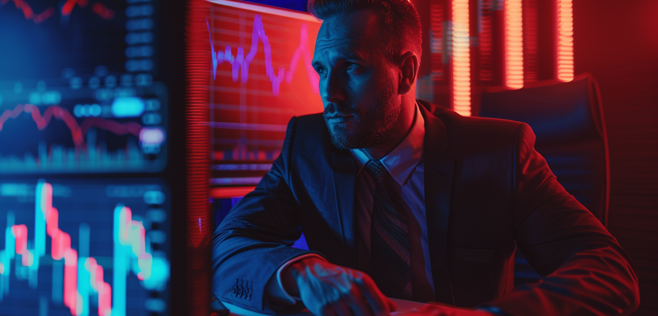
Over-Optimizing Strategies Based on Historical Data
The quest for perfection in AI crypto trading guides many toward a subtle yet dangerous trap: over-optimization. This mistake quietly damages trading performance while giving traders a false sense of security in their strategies.
What the mistake is
Over-optimization, or "curve fitting", happens when traders tune their AI crypto trading bot too precisely to historical data. These strategies might show remarkable backtesting results but fail spectacularly in live markets. The model becomes too finely adjusted to past market noise instead of identifying genuine patterns. The strategy simply memorizes historical peculiarities rather than learning useful insights, which makes it useless when market conditions shift.
Why it happens
Several psychological and technical factors create this error. Human brains naturally try to find patterns, even in random data — an instinct from our development that becomes problematic in trading. Many traders lack enough historical data to reach statistical significance, which results in parameter optimization that adds nothing valuable. The complexity of AI systems tempts traders to add too many parameters without thinking about increased overfitting risks.
How to avoid it
To curb over-optimization in AI cryptocurrency trading:
- Welcome simplicity — the best-performing bots often use basic strategies
- Keep some historical data just for final verification testing
- Use regularization techniques to minimize unnecessary complexity
- Apply walk-forward optimization to test strategy adaptability
- Cross-validate models in different market conditions
- Check strategy stability under parameter variations — dramatic performance changes from small adjustments signal trouble
Newcomers to crypto trading should focus on longer timeframes to filter out market noise. The best way to use AI for crypto trading requires finding the sweet spot between model complexity and reliability in a variety of market conditions.

Conclusion
AI crypto trading has great potential for investors, but newcomers must watch out for seven mistakes that can get pricey. You need to understand how AI bots work instead of blindly following their decisions. Ground testing beats market hype and helps you make informed choices rather than emotional ones.
Smart risk management with stop-loss settings protects your money during market drops. Using different strategies with multiple bots helps you handle various market conditions. Traders should question unrealistic promises and check credentials before putting money into any platform. On top of that, keeping an eye on your settings and making adjustments stops outdated parameters from causing big losses as markets change.
Without doubt, staying away from over-optimization helps build strategies that work in live markets instead of just past data. These guidelines are the foundations of safer AI crypto trading. Many new traders jump into automated trading without these safety measures and learn their lesson after losing substantial money.
Crypto markets will keep changing as AI technology advances. Smart traders stand out not by finding perfect algorithms but by using solid risk management, keeping realistic expectations, and watching their investments closely. These safety measures help protect your money while making the most of AI benefits, whether you're starting small or managing bigger portfolios.
AI works best as a powerful tool within a smart strategy rather than completely replacing human judgment. Traders who understand tech limits while using its analytical strengths set themselves up for lasting success in volatile markets.
Read More




 Get RateX Pro
Get RateX Pro

 06 Jun 2024
06 Jun 2024
